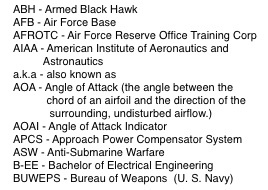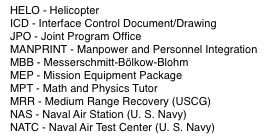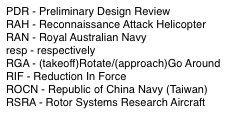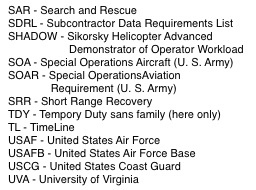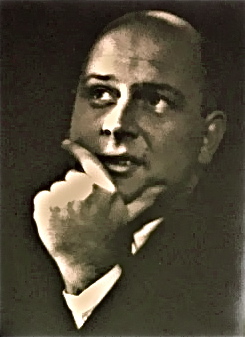Jay Sieling:
CLASS OF 1953
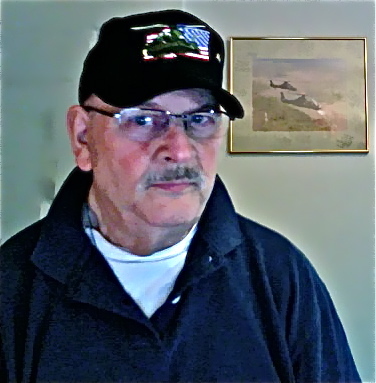
Susquehannock High SchoolClass of 1953
Glen rock, PA
University of Virginia - EngineeringClass of 1963
Charlottesville, VA
University of Virginia - Arts & SciencesClass of 1954
Charlottesville, VA
Jay's Story
My Life Story: Been There, Done That.
Got: 2 diplomas; 4 employers; lapel pins; beer steins; coffee mugs; and an authorized model of the Comanche helicopter.
In the 1950s, I:
* graduated from Susquehannock High School in PA.
I. SUSQUEHANNOCK HIGH SCHOOL - Sep 1 1949 - May 28 1953
- Class of '53. Senior Class of '53 Officers were: Mary Bierly, Historian; Allan Holland, Treasurer; Carolyn Miller, Secretary; Jane Anderson, Vice President; and me, Jay Sieling, President - Honor Students all. (Not to brag, but I was the only one of the group that lettered four times in football.)
* entered UVA School of Arts and Sciences in Charlottesville, VA; lasted one semester.
II. UNIVERSITY 0F VIRGINIA - ARTS AND SCIENCES: Sep 1 1953 - Jan 1 1954. Did not graduate! The shock of trying to coordinate Math, Physics, football, and dormitory living was just too much for this naive country boy.
* got a job in a furniture factory.
III. SIELING MODERN FURNITURE COMPANY: Jan 1 1954 - Sep 1 1954: Did odd jobs while transitioning from UVA-Arts & Sciences to UVA-Engineering.
* applied to the UVA School of Engineering for the the Fall-of-'54 semester and was accepted.
IV. UNIVERSITY OF VIRGINIA - ENGINEERING: Sep 1 1954 - Jun 9 1963. Graduating class of '63! Apparently, passing of "college" math was one reason for the E-school to accept me.
- Originally signed-up in the Mechanical Engineering Department majoring in Aeronautical Engineering - blew away first semester of this one, too. Re-started E-school by transferring to the Electrical Engineering Department majoring in Electronics. Seems I understood electrons better than 'free-bodies".
* lived in a dormitory room for a year.
* joined AFROTC; washed out two years later: Red-Green color blind.
* married my MPT, a college Math major/Physics minor; moved us into an upstairs apartment in Charlottesville.
* brought new daughter, Carol, and her mom home from the hospital two years later.
* started a series of part-time technical jobs that lasted until graduation. These paid 40% of my college tuition.
V. The TUITION AID jobs consisted of:
Va. TUITION AID - 1: Sep 7 1957 - Sep 1 1959. This part-time job in Specialties, Inc. design and drafting department augmented family income to support what became an extended, part-time E-school curriculum.
Vb. TUITION AID - 2: Sep 8 1959 - Oct 31 1960. Next got a FCC First Class Radio Telephone Operator License. and accepted a part-time job on the two, co-located, Charlottesville, VA radio stations (WCHV and WCCV-FM).
In the 1960s, I:
* Returned to Specialties, Inc.
Vc. TUITION AID - 3: Nov 1 1960 - Jun 9 1963. This time, was offered and accepted a job as an electronics laboratory technician in one of Specialties, Inc. development labs. After graduation, was promoted to an Avionics Engineering position with Automated Specialties, nee Specialties, Inc.
VI. ON MY WAY: Jun 10 1963 - Dec 31 1965. Teledyne Inc. acquired Specialties, Inc. of Charlottesville, VA; Automated Specialties was born. AOA-based APCS; Normalized AOAI systems; and an RGA pitch attitude guidance subsystem augmenting Collins Radio's FD-109 flight director system were added to Specialties product list..
> As an Assistant Project Engineer for avionics, my first assignment was to adapt APCS computers to various U.S. Navy aircraft-carrier-based attack aircraft. Responsibilities included hardware and circuit design; system integration; and flight tests of various embryonic RGA systems.
VII. APCS SUPPORT TRANSITIONS TO RGA DEVELOPMENT (Part 1, APCS): Jan 1 1966 - Dec 31 1967.
> Promoted to Project Engineer for the APCS. Supported flight tests of APCS designs at Patuxent River NATC; at sea on two separate aircraft carrier suitability cruises; and a U.S. Navy project in West Germany.
VIIa. TDY: AUGSBURG W. GERMANY: Aug 15 1966 - Nov 30 1966. As part of an on-site U.S. Navy BUWEPS Liaison Team in West Germany, provided support to West German Air Force testing of an Automated Specialties' APCS on the Loockheed F-104G Starfighter. The Lagerlechfeld airbase, near Augsburg, was the origin of these tests.
~ Off-duty sight-seeing in historic Augsburg produced some souvenirs; at trip to to the opera; a late-night visit to a real cabaret (WOW!); and walks in the park cogitating the Roman ruins.
* was legally separated from MPT; felt that the company later sent me to West Germany to "get over it".
* moved in with Bill, a good friend and co-worker with a nice Charlottesville apartment.
* finalized divorce from MPT.
* married Helen Marshall a year and a half later; Bill vacated the apartment and Helen moved in.
* traveled a lot in the last half of this decade, to wit: Patuxent River NATC, MD; Lagerlechfeld W. German AFB, near Augsburg; Andrews AFB, MD; Wright-Patterson AFB, OH; Collins Radio Co., IA; Tinker AFB, OK; Offutt AFB, NE; and Edwards AFB, CA.
VIII. APCS SUPPORT TRANSITIONS TO RGA DEVELOPMENT (Part 2, RGA): Jan 1 1967 - Dec 30 1969. Accepted position as Project Engineer for RGA development.
> Responsibilities included hardware and analog computation circuits, system integration, flight-test of a prototype RGA system (for many hours) on a USAF KC-135A aircraft ("Speckled Trout", tail no. 55-3126) out of Andrews AFB.
> Responsibilities also included RGA System technical liaison with Collins Radio Co. during USAF proposal phase for the use of the RGA as a subsystem to the Collins' FD-109 dual Flight Director System on C/KC-135 cargo and tanker aircraft.. WE WON!
- successfully completed Passenger Phase Physiological Training at Offutt AFB required for in-flight support of the Flight Director/RGA acceptance testing at Edwards AFB.
- went to the flight tests at Edwards AFB but didn't fly.
VIIIa. KC-135: Jun 15 1968. The KC-135A (military) and the Boeing 707 (commercial) airplanes were derived from Boeing's Model 367-80, thus the family resemblance. The prototype RGA System was development-flight-tested on a KC-135A configured as an avionics testbed as-well-as a VIP transport; i.e. sans fuel transfer equipment.
VIIIb. Code named Speckled Trout, after Faye Trout, the freckle-faced civilian program monitor at the Lab [Wright Lab then; Air Force Research Laboratory now], aircraft 55-3126 was the first of a long list of Speckled Trout aircraft and probably the only shiny, polished-aluminum aircraft in the (painted) KC-135 fleet.
In the 1970s, I:
* joined the AIAA.
* brought new daughter, Karla, and her mom, Helen, home from the hospital; moved the family to a house in Charlottesville, VA.
IX. TELEDYNE AVIONICS: Jan 2 1970 - Jan 2 1973 -
The company name changed from Automated Specialties to Teledyne Avionics. My next assignment was RGA Engineering Manager for the production phase of Teledyne Avionics' RGA subsystem on the C/KC-135.
IXa. As such, my duties included:
- liaison with Collins Engineering on system logic and interfaces.
- review of RGA system analyses to confirm proper hardware/software integration.
- analyze the Teledyne RGA hardware packaging documentation to confirm proper emphasis on reliability, maintainability, and configuration control.
IXb. VARIOUS TELEDYNE AVIONICS ENGINEERING STAFF ASSIGNMENTS: Jan 3 1973 - Nov 30 1979.
> As Project Engineer for electronic instruments, I:
- revised APCS computer maintenance manuals.
- supported the APCS manufacturing engineering section.
- designed custom analog circuits for aircraft instruments and test equipment.
- prepared technical proposals for AOA equipment marketing.
> As Senior Project Engineer for AOA systems, I:
- directed the engineering group that designed commercial systems and hardware for stall warning/stall prevention systems; normalized AOA indication systems; and aircraft automatic throttle control systems.
- supported customer FAA certification programs for new, normalized AOA indicator systems on Gulfstream, Sabreliner, Falconjet, and Citation business jets.
- introduced stall warning computers for the Learjet and the Diamond 1 business jets to the company product line.
- spent two weeks in Lakeland, FL in the middle of summer (flight-test ramp was hotter than the hinges of hades!!) providing AOA support for flight tests of a new Piper aircraft; ultimately the twin-engine, T-tailed Cheyenne II.
IXc. Attended AIAA SEMINAR IN DENVER, CO: Aug 3 1979 - Aug 6 1979. The company sent me to this seminar on the "Microprocessor Control of Aerospace Vehicles". The seminar was under the direction of Donald C. Fraser, Director, Control and Flight Dynamics Division The Charles Stark Draper Laboratory, Inc.
- My first pair of cowboy boots came from a store in Denver.
* We moved to a new house in Earlysville, VA; more space; closer to work.
In the 1980s, I:
* accepted an Avionics Engineering position with CGAD of Rockwell International, nee Collins Radio Co.; moved the family to Iowa.
X. ROCKWELL INTERNATIONAL: Dec 3 1979 - May 10 1984 Joined Rockwell International's CGAD in their Cedar Rapids, IA facility. During the 4.5 years there, I was:
- Avionics System Engineer for the U. S. Coast Guard SRR helicopter.
- System Engineer for Sikorsky Aircraft's X-Wing rotor control system design while on TDY in Stratford, CT.
- Avionics System Engineer on the CGAD department proposal effort for a new helicopter ASW avionics system.
Xa. U. S. COAST GUARD SHORT RANGE RECOVERY HELICOPTER: Dec 3 1979 - Aug 29 1983: The HH-65A is known for its Collins' autopilot capabilities, which can complete an unaided approach to the water and bring the aircraft into a stable 50 ft (15 m) hover, or automatically fly search patterns, an ability which allows the crew to engage in other tas...Expand for more
ks.
> As System Engineer on the U. S. Coast Guard SRR helicopter avionics program, I:
- directed design and fabrication of a dynamic simulator for the SRR helicopter.
- generated SRR avionics system signal flow data to support aircraft wiring design.
- provided SRR system analyses and appropriate documentation to support Category II FAA certification.
* went on TDY in Stratford, CT to support Sikorsky's X-Wing project.
Xb. TDY: STRATFORD, CT: Sep 1 1983 - Dec 21 1983.
> As a CGAD System Engineer, I consulted on the "X-Wing" rotor control system redundancy and installation design modifications for the addition of an experimental rotor to the Sikorsky S-72 RSRA. This task was performed at the Sikorsky Aircraft Stratfod, CT facility under Rockwell International, Collins Government Avionics Division (CGAD), contract to Sikorsky Aircraft.
Later in the 1980s, I accepted an Avionics Engineering position with Sikorsky Aircraft Division of United Technologies; moved the family to Connecticut.
XI. SIKORSKY AIRCRAFT: May 13 1984 - Aug 31 1999. Joined the Sikorsky Aircraft Company to work in their Stratford, CT facility. My first assignment was as a Senior Systems Engineer for the SHADOW research helicopter avionics integration and test. SHADOW was the ergonomics testbed for what was to become the RAH-66 Comanche.
XIa. SHADOW: May 15 1984 - Nov 29 1985. The SHADOW had a single-pilot advanced cockpit grafted to the nose of an S-76 helicopter. The purpose was to study the MANPRINT or human engineering interface between the pilot and the cockpit controls and displays. This cockpit was the prototype of a single-pilot cockpit designed for use on the prototype RAH-66 Comanche armed reconnaissance helicopter. The "fly-by-wire" control system was designed so sensors would feed data to the pilot through helmet mounted displays. A MANPRINT study determined that single-pilot operation of the Comanche was unsafe, and would result in pilot overload. As result of this 1985 study, the Comanche was designed to be operated by a two-man crew.
> As Senior Systems Engineer for SHADOW avionics integration and test, I:
~ directed SHADOW avionics functional database operation.
~ defined SHADOW avionics hot-bench mock-up and associated test facilities.
* A second assignment took me on TDY to Woodland Hills, CA, for a year, as Subcontractor On-Site Manager for technical liaison with the mission avionics subcontractors for the SH-60F CV HELO ASW helicopter.
XII. TDY: WOODLAND HILLS, CA - Dec 2 1985 - Nov 28 1986
> As the on-site Subcontractor Liaison Engineer for the CV Helo mission avionics system at the lead subcontractor, Teledyne Systems Co. in Northridge, CA, and the towed array sonar system subcontractor, Bendix Oceanics in Sylmar, CA I:
~ maintained technical liaison between Sikorsky and subcontractor engineers.
~ supported design and program reviews.
~ monitored design and fabrication progress.
~ witnessed hardware acceptance and qualification tests.
* Used my vacation time to do the tourist thing when Helen and Karla came to visit California twice. We visited: Universal Studios; Marineland; Knott's Berry Farm; Catalina Island (stayed over night); San Diego Zoo; and SeaWorld.
XIII. U.S. COAST GUARD'S MRR HH-60J JAYHAWK - Dec 1 1986 - Jan 29 1988.
The Sikorsky HH-60J Jayhawk was designed to operate in all weather conditions and the capability of performing rescue missions from shore to 300 nautical miles offshore. Additional uses of the Jayhawk include law enforcement, logistics, environmental surveillance, and support of the U. S. military.
> As System Engineering Design Manager, I:
- prepared presentations for software PDR and CDR.
- supervised preparation of Sikorsky's top level software test documentation.
- reviewed and directed changes to the display system subcontractor's software design and test documentation.
- managed the engineering-end of critical software documentation submittals for customer approval.
- provided the primary subcontractor's Statement of Work.
- provided top-level MIL-STD-1679A software design documentation.
XIV. U. S. ARMY'S MH-60K SOA - Feb 1 1988 - Feb 24 1989.
The MH-60K is the standard Army special operations version of the Black Hawk. Sikorsky's MH-60K SOA is designed for long-range, low-level operations at night and in adverse weather. This special operations aircraft is outfitted with an advanced integrated cockpit, upgraded engines and transmissions, forward looking infrared radar, terrain following/terrain avoidance radar, additional internal fuel tanks, upgraded navigation and communication systems, and an external rescue hoist. It has an air-refueling capability and a removable external tank system.
> As a Senior Systems Engineer on the SOA program, I:
- supported the Crew Station Working Group that defined the details of the SOA cockpit.
- authored the avionics System Requirements Document.
- approved the Communication, Navigation, Display, and Mil-Std-1553 Data Bus avionics subsystem schematic diagrams.
- provided on-site system engineering support of the avionics contractor and subcontractor software design reviews.
- reviewed the avionics contractor's top-level hardware and software - including Mil-Std-1553 bus ICD - documentation.
- generated a CDRL-to-SDRL cross-reference matrix to correlate Sikorsky's tech data submittal commitments data submittals with the avionics system contractor's data submittals to Sikorsky.
- supported the avionics system presentations at Sikorsky's aircraft PDRs and CDRs.
XV. VARIOUS SENIOR SYSTEMS ENGINEERING STAFF ASSIGNMENTS -
Mar 6 1989 - Apr 12 1991
XVa. ABH Study Program.
> As Senior Systems Engineer for the Armed Black Hawk study program, I conducted a survey of weapons control system components that included:
- a conceptual system requirements document and statement of work.
- a hypothetical system architecture utilizing a rotor-mast mounted sight with infrared and low-level TV sensors and a laser target designator/rangefinder.
[FYI: The first ABH test flight took place in Israel in early September 2008. Google: Sikorsky, Armed Black Hawk]
XVb. D/NAPS Proposal.
> As Senior Systems Engineer on the D/NAPS Proposal, I co-authored and edited the Team Experience section for a successful Day/Night Adverse-weather Pilotage System proposal.
XVc. ROCN Avionics Program.
> As Senior Systems Engineer on Sikorsky's S-70(M) Thunderhawk avionics for the ROCN program, I:
- provided system engineering reviews of top-level software documentation.
- defined changes required for approval of the ROCN's Avionic System Integration Facility Acceptance Test Procedure.
XVd. RAN Avionics Program.
> As Senior Systems Engineer on Sikorsky's S-70B-2 Seahawk avionics for the RAN program, I:
- generated RAN avionics CSC-level software test plans and documented the associate test results.
- co-authored RAN avionics software stress test plan and participated in the stress test.
- prepared technical briefs to support resolution of RAN avionic system deficiency issues.
Later in the 1990s:
XVI. I got more Sikorsky Senior System Engineering Staff assignments, i.e, an assignment to the Joint Boeing Sikorsky Comanche Development Program Next I was transferred to the joint Boeing Sikorsky Comanche Program Office (JPO) in Trumbull, CT.
XVIa. JOINT BOEING SIKORSKY COMANCHE DEVELOPMENT PROGRAM
Apr 15 1991 - Jan 29 1993
> As Sikorsky's Senior Comanche System Engineer for the Mission Equipment Package (MEP) integration, I:
- developed the MEP-to-Airframe ICD that became the model for similar Sikorsky and Boeing Helicopter Comanche documents.
- monitored the electrical and mechanical design of the MEP-to-Comanche airframe installation.
- reviewed, tracked, and reported the status of the MEP Integration group's responses to design review issues.
XVIb. COMANCHE JOINT PROGRAM OFFICE
Feb 1 1993 - Aug 30 1999
> Accepted a transfer to the Configuration Management Section of the Boeing Sikorsky Comanche Joint Program Office initially in Trumbull, CT and subsequently, on TDY in Media PA. (This was in accordance with a Boeing Helicopter and Sikorsky Aircraft agreement to periodically alternate the location of the program office between Sikorsky in CT and Boeing Helicopter in PA.)
- As Comanche Configuration Management Project Engineer, it was my role to provide CM technical support to the Boeing Sikorsky JPO as required.
XVIc. I was assigned to a one-year ( Oct 1 1996 - Nov 1 1997) TDY in Media, PA. when it was Boeing Helicopter's turn to host the JPO office. Sikorsky put me up in an apartment building in Media, PA for a year when the JPO transferred to International Plaza in Philadelphia, PA.
* Helen came down from CT to visit occasionally. After several house hunting trips, we finally moved to Delaware. I commuted from there to Philly until I retired.
* got an AIAA membership upgrade from Member to Senior Member.
XVII. RETIRED early (Aug. 1999): incentives looked better than RIF layoff several months later.
In the 2000s:
XVIII. U. S. ARMY CANCELS COMANCHE HELICOPTER - Feb 23, 2004
- WASHINGTON (CNN) -- The U.S. Army has decided to pull the plug on the development of the RAH-66 Comanche helicopter and instead use the money to upgrade its current fleet and replace aging National Guard and Army Reserve helicopters, Pentagon officials said.
* Carol and Karla are doing fine; Carol is tending her farm in Virginia; Karla got married and is living and working in Maryland.
* Helen and I celebrated our 40th wedding anniversary with a new set of wheels.
* 2010 Crystal ball is "Tango Uniform".
Register for Free to view all details!
Yearbooks
Reunions
Register for Free to start a reunion event!
Photos
